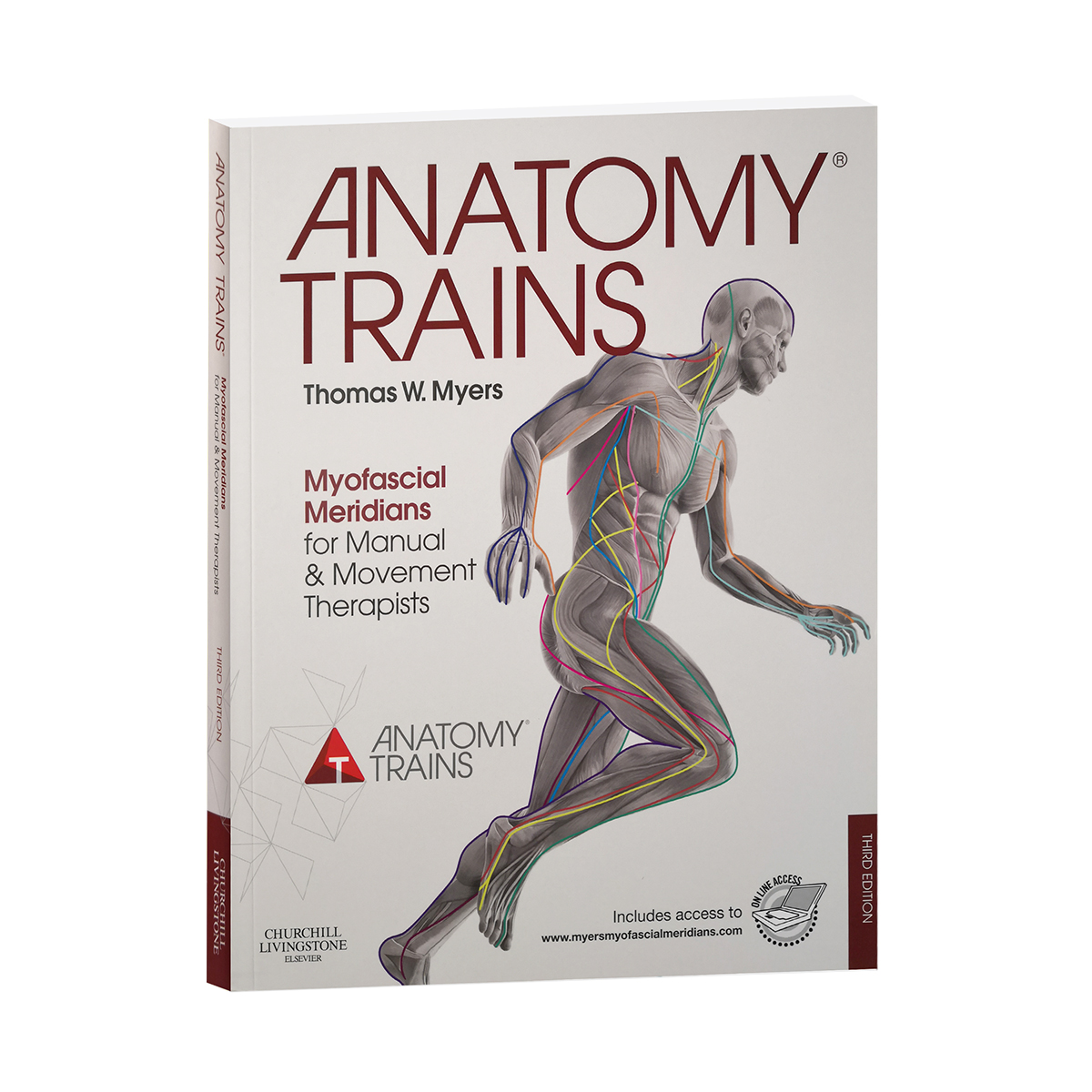Anatomy Trains - Myofascial Meridians
Anatomy Trains - Myofascial Meridians
49,98 €
Sofort verfügbar, Lieferzeit: 1-3 Tage
Anatomy Trains
Myofascial Meridians for Manual & Movement Therapists
Diese englische Edition des deutschsprachigen Buches "Anatomy Trains - Myofasziale Leitbahnen" hilft dir, die funktionellen Zusammenhänge der Muskel-Faszien-Ketten zu erkennen und mit ihnen zu arbeiten. Zum einfachen Verständnis benutzt der Autor Thomas W. Myers die Metapher von Schienen bzw. Eisenbahnlinien, die miteinander korrespondieren müssen.
Das Buch richtet sich vor allem an Personen, die sich mit menschlicher Struktur und Bewegungen befassen: Physiotherapeuten, Athleten, Personal Trainer, Reha-Spezialisten, Osteopathen, Chiropraktiker, Manualtherapeuten, Yoga- und Pilates-Trainer, Masseure & med. Bademeister, Tanz- und Bewegungstrainer, Akupunkteure.
Klappentext:
What are Anatomy Trains?
Traditional anatomical study emphasizes individual muscles attaching from end to end, from bone to bone. Anatomy Trains expands our understanding of myofascial force transmission and the effects - for good and for ill - that interrupted strain distribution can have at some distance from injury or pain.
This voume clearly describes functionally integrated body wide continuities within the fascial webbing forming traceable 'meridians' of myofascia. Stability, strain, tension, fixation, resilience and postural compensation are all distributed via these lines. Based on the meridian map, this book presents many new and holistic strategies for manual and movement therapists to restore and enhance posture and movement function.
The theory offers the following benefits to the practitioner:
1. Anatomy Trains are applicable no matter what your approach. Once patterns are recognized, these meridians can be easily applied in assessment and treatment employing a variety of therapeutic and educational approaches to movement facilitation.
2. The theory provides a more powerful 'three dimensional' feel for musculoskeletal anatomy and an appreciation of whole body patterns distributing compensation in daily and performance functionality.
3. Clinically, the theory shows you how painful problems in one area of the body can be linked to a 'silent area' some part removed from the problem, giving rise to new treatment strategies.
Features
- Layout designed to allow the reader to gather the concept quickly or gain a more detailed understanding of any given area according to need
- Icons direct readers to their own specialist areas of interest, e.g. manual therapy, movement therapy, visual assessment, kinaesthetic education or supplementary video material
- Explores the latest evidence for the scientific basis of common clinical findings, including human fascial dissections
- Discusses the role of fascia as our largest sensory organ
- Contains updates arising out of continual teaching and practice - for example, the role of fascia in strain distribution and how strain patterns generate pain patterns
- New section discusses the role of Anatomy Trains theory in the analysis of gait
- Accompanying website presents multi-media exploration of the concepts described in the book - video clips from Anatomy Trains® DVDs, computer graphics, additional video sequences, webinars and extra client photos for visual assessment practice
What is this book for?
Anatomy Trains is designed to interest all professional engaged in human structure and movemen: physiotherapists, athletic and personal trainers, rehab specialists, osteopaths, chiropractors, manual therapists, yoga and Pilates teachers, massage therapists, dance and movement teachers, and Asian bodyworkers and acupuncturists.
Neu in der 3. Auflage:
- Komplette Überarbeitung und Aktualisierung aller Inhalte
- Kapitel zur Ganganalyse
- Online-Zugang zur englischsprachigen Begleitwebsite mit umfangreichem Zusatzmaterial
- Das Plus im Web - www.elsevier.de - Dieses Buch kann mehr!
- Der Titel hat Anbindung an das Elsevier-Portal! Der Code im Buch schaltet zusätzliche Inhalte im Internet frei.
Mit dem Zugang auf die englischsprachige Begleitwebsite haben Sie kostenfreien Zugrifff auf:
- englischsprachige Videoclips mit Anwendungen in der klinischen Praxis, zur Präparationen und zum visuellen Assessment
- computergrafische Darstellungen der Anatomischen Zuglinien
- weitere Patientenfotos, an denen das visuelle Assessment geübt werden kann
Produktdetails:
- Autor: Thomas W. Myers
- Sprache: Englisch
- Auflage: 3. Auflage 2015
- ISBN: 978-0-7020-4654-4
- Verlag: Churchill Livingstone Elsevier
Anmelden


